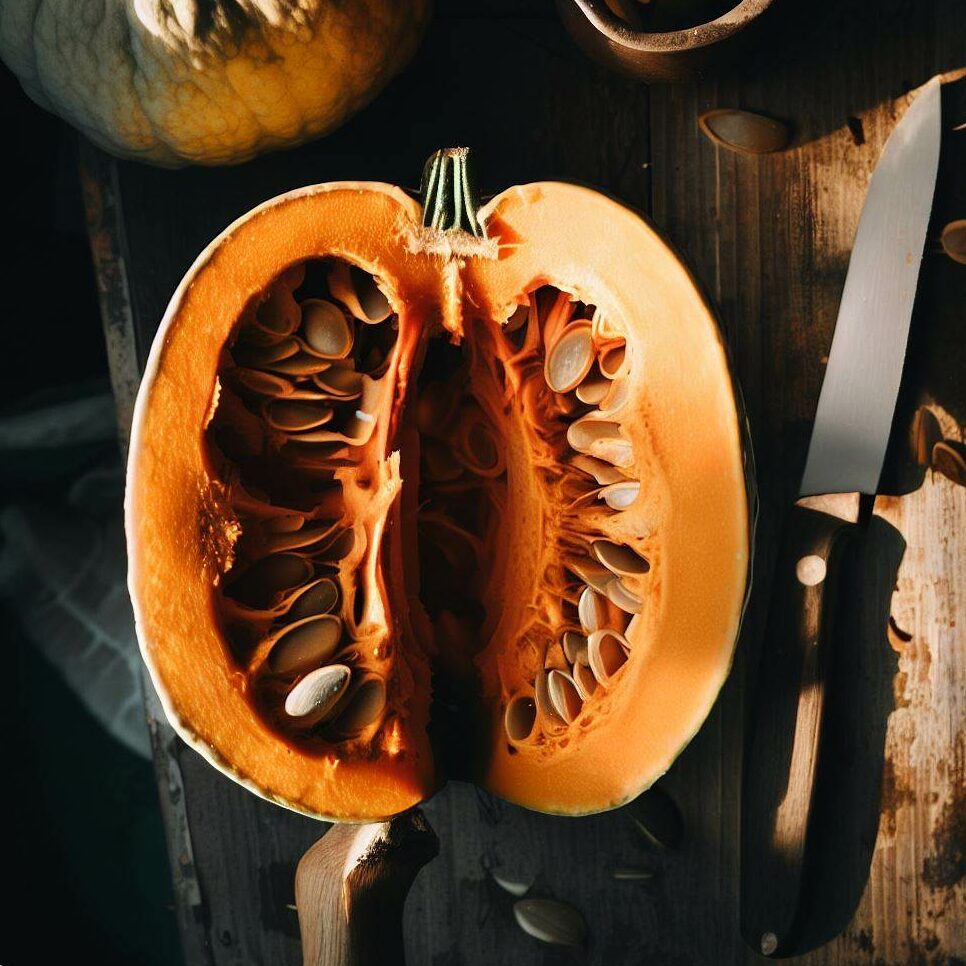An Abundant Harvest Starts With Proper Seed Storage
Proper pumpkin seed saving and storage techniques allow gardeners to preserve favorable pumpkin traits across seasons. With proper drying and refrigeration, pumpkin seeds remain viable for replanting for up to 5 years. Just a few simple steps to harvest and store seeds will provide free pumpkin plants perfectly adapted to your growing conditions for future harvests.
Do you store pumpkin seeds in the fridge prior to planting? Proper refrigeration is key to successfully storing pumpkin seeds for planting. To maintain viability, seeds should be thoroughly dried and cured before placing in an airtight container in the refrigerator. Store seeds in the back of the fridge at temperatures between 35-41°F (2-5°C). Under these cool, dark conditions, pumpkin seeds remain fresh for planting for up to 5 years. Monitor periodically and discard any seeds with signs of damage or germination. When ready to plant, sprout refrigerated seeds on damp paper towels and provide consistent moisture and warmth for strong seedlings. With the right harvesting, curing, and refrigerated storage, you can save pumpkin seeds indefinitely for future growing seasons.

What’s Ahead
- When to harvest ripe seeds
- Drying and curing for viability
- Ideal fridge conditions
- Checking seed health pre-planting
- Planting stored seeds next season
Follow along as we explore the ins and outs of refrigerator seed storage. With the right techniques, you can easily save your pumpkin seeds for planting year after year.
Pro Tip: Label seed packets with details like pumpkin variety and harvest date for future reference.
Knowing When to Harvest Ripe Pumpkin Seeds
Timing is everything when it comes to collecting seeds for planting. Pumpkin seeds reach maturity when the fruits are fully ripe. Here’s what to look for:
- Pumpkins have turned their full mature color and have hardened rinds.
- Vines are beginning to die back.
- Pumpkins sound hollow when thumped.
- Stems easily detach from the fruit.
Plan to harvest seeds on a warm, sunny day. Carefully cut open ripe pumpkins and scoop out the insides. Be sure to remove all pulp and strings clinging to the seeds – this will make drying them easier.
It’s vital to allow seeds to mature fully on the vine before harvesting for the highest viability rates. Collect seeds too early and they may not germinate well. Once seeds are extracted from pumpkins, refrain from rinsing or washing them right away. Let them air dry for 1-2 weeks first.
Avoid Cross-Pollination
When saving seeds for planting, it’s best to isolate seeds from different pumpkin varieties. Cross-pollination between varieties can lead to hybrid offspring with unpredictable genetics. Here are some tips to prevent cross-pollination:
- Harvest seeds from one variety at a time.
- Separate different varieties by at least [500 feet (150 m)] in the garden.
- Cover developing pumpkins with fabric bags to exclude foreign pollen.
- Stagger planting times 3 weeks apart.
Ensuring “pure” seeds free of cross-pollination will give you the best shot at propagating the exact pumpkin variety you desire. Take steps to isolate varieties during the growing season for seed purity.
🎃 Seed Saving Suggestion: Write pumpkin variety names directly on fruits with a permanent marker for easy identification later. 🎃

Drying and Curing Pumpkin Seeds for Storage
Once seeds are harvested, it’s crucial to dry and cure them properly prior to storage. This process prepares them for dormancy and boosts viability rates. Here are the steps:
- Remove all pulp and stringy fibers from the seeds by hand.
- Rinse seeds and drain well in a colander.
- Spread seeds in a single layer on paper towels or mesh screens.
- Allow seeds to air dry for 1-2 weeks, turning occasionally.
- Check seeds for moisture – they should be completely dry.
- Transfer extremely dry seeds to envelopes or jars for curing.
The curing phase allows seeds to continue drying while in storage. It improves germination rates by eliminating any remaining moisture. Curing pumpkin seeds correctly is vital for viability.
Curing Tips
- Store cured seeds in envelopes, paper bags, or open containers.
- Allow air circulation to prevent mold growth.
- Keep seeds in a consistently cool, dark, and dry spot.
- Cure for 4-6 weeks, checking for moisture.
- Discard any seeds that appear moldy.
With ample drying and curing time, pumpkin seeds will remain viable for years when stored properly. Never store seeds until they are fully dried and cured.
🎃 Drying Diligently: To test seed dryness, fold in half – brittle seeds snap cleanly while moist ones bend. 🎃
Storing Pumpkin Seeds in the Refrigerator
The refrigerator provides an ideal environment for long-term seed storage. It’s cold, dark, and dry – everything seeds need to remain dormant. Follow these tips for fridge storage success:
- Allow seeds to fully dry and cure before refrigerating.
- Place seeds in envelopes or plastic containers with ventilation holes.
- Label containers with variety and harvest date.
- Store containers in a crisper drawer or back of the fridge.
- Maintain fridge temperature between 2-5°C (35-41°F).
Refrigeration slows the metabolism of seeds, essentially putting them into hibernation. The cold preserves them by preventing mold growth and early germination. Stored properly, pumpkin seeds stay viable for planting for up to 5 years in the fridge.
Monitoring Stored Seeds
It’s wise to occasionally check stored seeds in the fridge. Look for any signs of moisture, mold, or germination. Discard any damaged seeds and replace worn envelopes as needed. With minimal monitoring, your pumpkin seeds can last for several planting seasons when refrigerated.
🎃 Curing Carefully: Throw in a dessicant pack to absorb any moisture and keep seeds crisp. 🎃
Refrigeration offers gardeners an accessible seed storage solution. Follow proper curing, drying, and storage methods, and you’ll have an abundant pumpkin harvest year after year.

Testing Pumpkin Seed Viability Before Planting
Before going through the effort of planting stored pumpkin seeds, it’s wise to check if they are still viable. Non-viable seeds will fail to sprout or produce weak, stunted seedlings. Try these simple at-home tests:
- Cut Test: Carefully slice a seed in half with a razor. Viable seeds have a firm, white interior.
- Float Test: Drop seeds in a glass of water. Viable seeds sink while non-viable ones float.
Also inspect seeds visually for any signs of damage:
- Shriveled, cracked, or deformed seeds
- Mold, rot, or fungus
- Holes from insect damage
- Discoloration or lesions
Damaged or dead seeds should be discarded. Focus planting efforts on healthy, viable seeds for the best results. Test a sample of seeds 1-2 months before ideal planting time.
🌱 Sprouting Suggestion: Try sprouting a few seeds on a damp paper towel to gauge viability. 🌱
With a simple viability test, you can ensure stored pumpkin seeds are ready for a successful growing season.
Planting Refrigerated Pumpkin Seeds
When spring rolls around, it’s time to plant those stored refrigerator seeds! Follow this timeline for planting:
- Start seeds indoors 4 weeks before last frost date.
- Harden off seedlings for 7-10 days.
- Transplant outdoors after danger of frost.
- Seedlings emerge in 5-10 days.
A few preparations can boost germination rates:
- Soak seeds in room temperature water for 12-24 hours before planting.
- Gently abrade seed shells with sandpaper for easier water absorption.
- Sprout seeds on a damp paper towel for faster germination.
To plant, sow seeds [1-2 cm] deep in loose, fertile soil. Space [60-90 cm] apart to allow for vine growth. Maintain even moisture and temperatures around 70°F (21°C).
Troubleshooting Germination Issues
- Hard seed shells – nick, soak, or sprout seeds first.
- Improper planting depth – don’t bury too deep.
- Temperature – ensure 70°F+ soil temp.
- Poor moisture levels – don’t let soil dry out.
With a little TLC, stored pumpkin seeds will thrive into healthy seedlings. Be patient – germination can take over two weeks.
🎃 Planting Pointer: Intercrop pumpkins with radishes – they break up and aerate soil for better pumpkin growth. 🎃

Alternate Pumpkin Seed Storage Methods
While refrigerator storage works well, there are a few other options for preserving seeds:
- Freezing – Effective but risks moisture damage during thawing.
- Cold Cellar – Provides constant cool temps if free of pests/rodents.
- Food Storage Containers – Useful for short-term storage up to 1 year.
Regardless of method, proper drying and curing is essential. The refrigerator offers the optimal cold, dark, and dry conditions for long-term seed storage.
The Seeds of a Bountiful Harvest
Saving pumpkin seeds for planting is simple with the right harvesting, curing, and storage techniques. Refrigeration puts seeds into stasis, allowing gardeners to preserve genetics year after year. With viable seeds on hand, you’ll be set for seasons of robust pumpkin crops. Happy growing!
